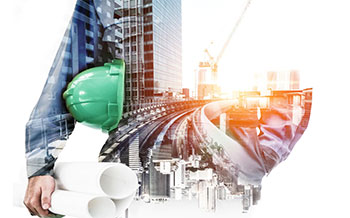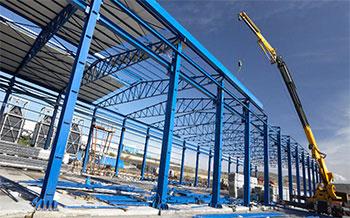
INDUSTRIAL BUILDING DESIGN ARCHITECTURE

INDUSTRIAL BUILDING DESIGN ARCHITECTURE
Best Industrial design consultant
Success in the ever-changing field of product development depends on utilising the knowledge and skills of the top industrial design consultants. Acting as creative architects, these experts combine innovation and design to produce products that are truly revolutionary.
Proficient comprehension of market trends, user requirements, and manufacturing processes characterises the top industrial design consultants. Their creative process guarantees that each design not only improves the user experience but also captivates the eye. These consultants turn ideas into concrete, commercially viable realities with an intense attention to detail and a dedication to stretching the creative envelope. A competitive edge is ensured by partnering with industry leaders, who raise the bar for products.
Services offered by Best Industrial design consultant
Selected as the best consultant is critical to innovation and success in the ever-changing field of industrial design. A wide range of services beyond just product aesthetics are provided by the best industrial design consultants. A smooth transition from concept to market-ready product is ensured by their expertise in thorough research, conceptualization, and prototyping.
With a keen grasp of user experience and state-of-the-art technology, these professionals produce designs that are not only aesthetically pleasing but also incredibly practical. Expert industrial design consultants work closely with customers to create solutions that are specifically tailored to industry requirements. They are skilled in sustainability as well, guaranteeing designs that are both environmentally responsible and future-proof. These advisors are dedicated to providing high-quality services and are essential in turning ideas into innovative, industry-changing products.
Industrial building design architecture is a dynamic field that has evolved significantly over the years. Industrial buildings serve as the backbone of our modern economies, housing factories, warehouses, and logistical hubs that are essential for manufacturing and distribution. The architecture of these structures is not merely functional but plays a crucial role in enhancing efficiency, sustainability, and safety. This essay explores the key aspects of industrial building design architecture, including its historical evolution, contemporary trends, and the integration of sustainable practices.
Contemporary Trends in Industrial Building Design
Today, industrial building design has moved beyond the strict utilitarianism of the past. Contemporary trends prioritize a holistic approach that balances functionality, aesthetics, and sustainability. Some key trends in modern industrial building design include:
Flexibility: Industrial buildings are increasingly designed with adaptability in mind. This allows them to accommodate changing production processes and technological advancements. Flexible layouts and modular designs are common features.
Sustainability: Sustainability is a growing concern in industrial architecture. Designers are incorporating eco-friendly materials, energy-efficient systems, and renewable energy sources to reduce the environmental impact of industrial facilities. Green roofs, rainwater harvesting, and natural ventilation systems are often integrated.
Daylighting and Aesthetics: Natural light is now considered an essential element in industrial buildings. The use of large windows, skylights, and translucent roofing materials not only reduces energy consumption but also enhances the working environment. Architectural elements like color, landscaping, and artistic facades are being used to create visually appealing industrial spaces.
Technology Integration: The Fourth Industrial Revolution has brought about a greater integration of technology in industrial design. Smart sensors, automation, and data-driven systems are used to optimize operations, improve safety, and reduce energy consumption.
Adaptive Reuse: In many cases, old industrial buildings are being repurposed for new uses, such as creative offices, art studios, or residential spaces. Adaptive reuse not only preserves historical architecture but also reduces the need for new construction.
Sustainability in Industrial Building Design
Sustainability is a critical aspect of contemporary industrial building design architecture. Industrial buildings are among the largest consumers of energy and resources, making them prime candidates for sustainable practices. Some key sustainability considerations in industrial design include:
Energy Efficiency: Incorporating energy-efficient lighting, HVAC systems, and insulation can significantly reduce energy consumption. The use of renewable energy sources like solar panels and wind turbines can further reduce the carbon footprint.
Water Management: Implementing water-efficient fixtures, recycling systems, and rainwater harvesting can reduce water usage and minimize environmental impact.
Material Selection: Choosing sustainable building materials, such as recycled steel and low-impact concrete, can reduce resource depletion and lower emissions during production.
Site Design: Proper site planning can minimize environmental disruption, protect natural habitats, and encourage sustainable transportation options.
Life-Cycle Assessment: Conducting life-cycle assessments helps designers evaluate the environmental impact of industrial buildings from construction through operation and eventual demolition, allowing for informed decisions.
Conclusion
Industrial building design architecture has come a long way from its utilitarian beginnings. Today, it combines functionality with aesthetics and sustainability to create structures that are not only efficient but also environmentally responsible. As the world continues to grapple with environmental challenges, the role of industrial architects in developing sustainable solutions becomes increasingly crucial. By embracing innovative technologies and design principles, industrial building designers can contribute to a more sustainable and visually appealing industrial landscape.
WAREHOUSE STEEL STRUCTURAL CONTRACTORS
Warehouse Shed Cost - Estimation Per Sq ft

Why To Choose Warehouse Builders?
Learn More
Essential Blogs for the Construction Industry
Learn More
Pre-Engineered Building Future of Construction Industry
Learn MoreOur Industrial Construction Works
When you choose us, you'll feel the benefit of 20 years' experience of industrial construction services. With our capacity to meet the mass requests, we have had the option to take special care of the requirements of our significant clients.
Warehouse Construction
The most common material used for warehouses is steel, creating a pipe system that supports the outside cladding & roof.

Industrial Construction
Industrial construction deals with factories, power plants, warehouses, and other highly specialized facilities.

PEB
Manufacturers
Pre-Engineered Building is the fundamental based design which directly manufactured by the PEB Manufacturers association.

PEB
Contractors
PEB is the ideal choice for any kind of construction needs whether it is for the individual reason/for the business reason.

Pre-Engineering Building
Pre-Engineering Building are broadly utilized in the residential just as industrial sector for its unparalleled attributes.

PEB Steel
Building Construction
Steel is heat proof, meaning it will not totally stop a fire. Steel is one of the most durable materials for construction.

